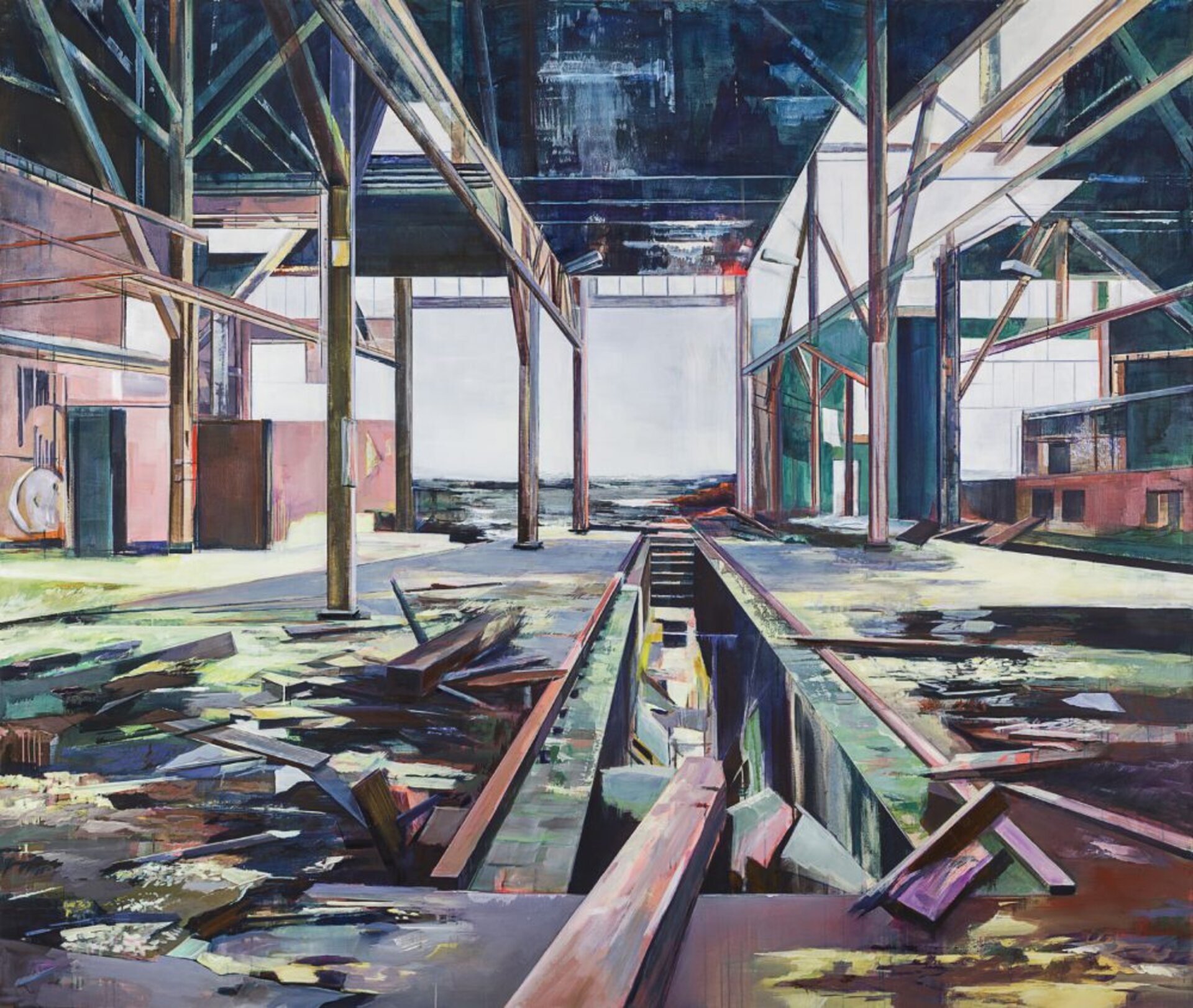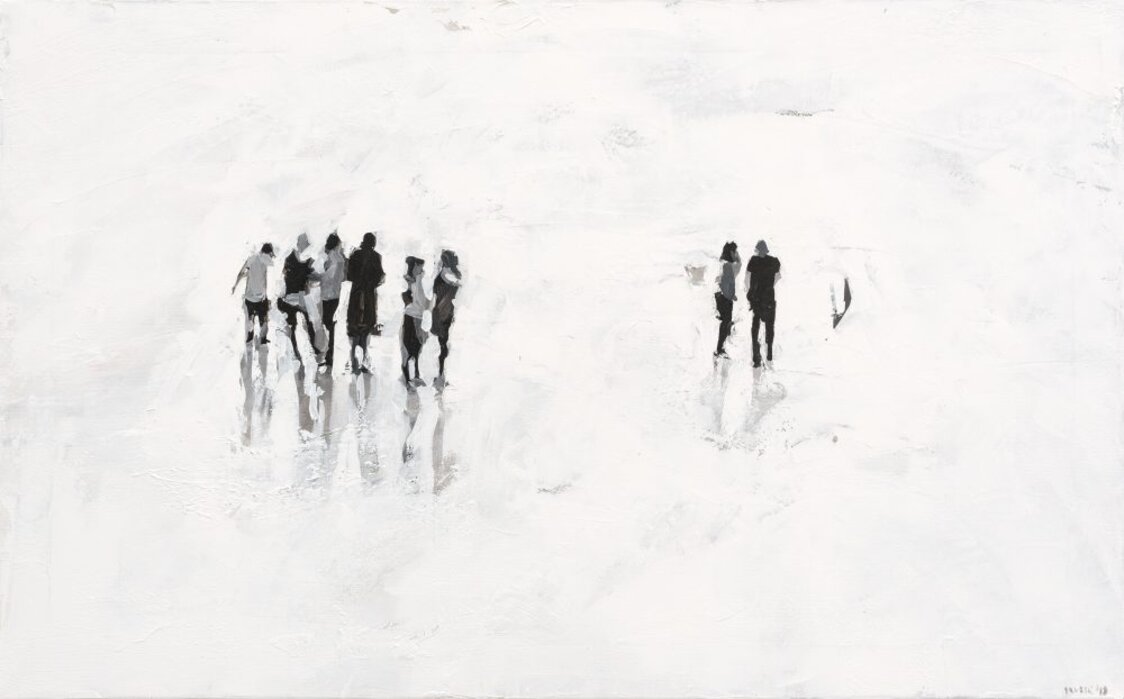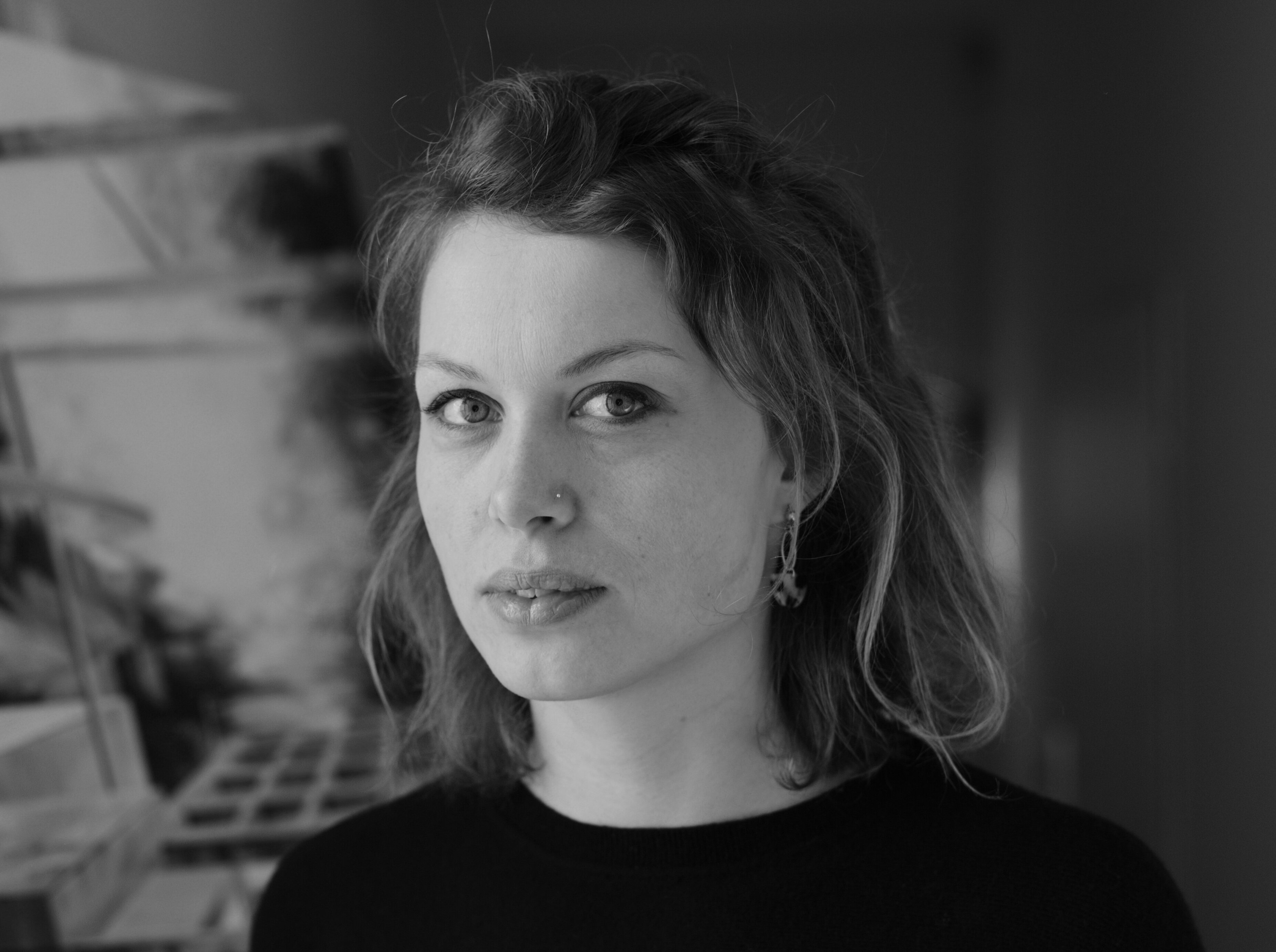
Positions Munich
17.Oct - 20.Oct 2019
The first edition of the new POSITIONS Munich Art Fair will take place from October 17 - 20, 2019 at the Reithalle Munich. After two very successful participations at paper positions munich, this will now become POSITIONS Munich Art Fair.
We present studio fresh works by Dorothee Liebscher & Leszek Skurski.
Location
riding hall, Heßstraße 132, 80797 Munich

Dorothee Liebscher

Dorothee Liebscher's paintings depict imaginary views of architectural and landscape spaces, which often portray run-down, abandoned buildings, partly overgrown by vegetation. For the artist, who lives and works in Leipzig, the investigation into spatial themes holds central significance. The viewer adopts the image protagonist role and experiences the architectural structures. Insinuated landscape views, as well as a deep horizon, convey a great sense of depth. This results in thoughtfully constructed spaces that interpret reality subjectively and reveal to the viewer a hidden world that always offers new mysteries and raises questions. The paintings feature a specific color palette and exist in a field of tension between nostalgia and utopia. Partially surreal pictorial worlds emerge on the canvas. Through the intertwining of reality, memory, and fiction, spatial compositions emerge that invite the viewer to embark on his or her own exploration of an unfamiliar, yet at the same time seemingly familiar world.
To the artist page
Leszek Skurski

On Painting, Silence, and the Flow of Time
Leszek, many of your collectors describe your paintings as especially calm, even meditative.
Do you yourself experience that calmness while painting – or is your studio life quite different?
It’s probably the colour white that makes this sense of calm feel so present. I never explicitly searched for calmness, but I do like working in an environment where I’m not distracted. That said, painting is not monotonous in my case – it’s very focused, and never truly quiet.
You work in Fulda and sometimes in Mallorca – a place of light and vastness – and you grew up in Poland.
How do these contrasts influence your sense of space, colour, and artistic identity?
That’s a question I ask myself a lot. I grew up in Gdańsk in the 1980s, where
everything was quite grey in general. I think that’s why monochrome compositions came so naturally to me. It’s not that I don’t enjoy working with colour – I do, very much. But somehow, ideas in white feel more honest to me.
Your recent monograph mentions the importance of “happy accidents.”
Has there been a recent moment when chance unexpectedly enriched a painting?
Yes, of course – usually out of frustration when something doesn’t work. Then I completely change the concept to free myself from the idea I no longer believe in. Sometimes it’s even worse. But sometimes, something remarkable emerges. Then I ask myself: What did I just do?! And it’s hard to repeat.
The playwright Heiner Müller is quoted there, saying: “It’s the leap that creates the experience – not the step.”
Has there been a particular leap in your practice or career that felt especially important?
Yes – but you only recognise it much later. That’s the strange thing about art. You try things, experiment, keep creating, and eventually you can look back and see the leaps. I still believe that my piece Abgang was such a leap. It was the moment I knew what I had to do – no doubts. A complete flow.
Many people wonder when you decide that a painting is finished.
Is there a clear moment, a specific feeling – or is it different each time? There’s that old truth among artists: it’s finished when it’s hung on the gallery wall. Over time, I think each artist develops a feeling for that particular moment – the sense that the work couldn’t be any better.
Your works are neither loud nor explanatory – and that’s what makes them timeless.
Is that openness something you aim for – or does it emerge in the process? Wait a minute! Some of my paintings actually scream at me. I know they have that energy – and they can also be extremely quiet. That kind of contrast heightens the atmosphere and maybe helps others step into my world. At least I hope so.
You’ve created nearly 3,000 works, yet you still seem curious and open to new directions.
Is there anything you’re determined to explore or change in the future?
It feels like I still need to paint ten times that amount. It’s hard to decide what to do next – and at the same time, it’s a great feeling to know the time is limited. That makes each decision more important. I’ve planned so many concepts, but there’s only so much time.
Just today I spent hours photographing and observing cliffs. An incredible subject – art historically, a total highlight. But to do it justice, I’d probably need two years. I still need to think about it.
One last question, almost poetic:
In many of your paintings, different moments seem to take place simultaneously – as if time is dissolving.
Do you feel a different sense of time while painting?
Yes, very poetic – and I think that’s partly why we do what we do, as artists: to stop time. Both within the artwork and during the process itself. The world keeps turning, and I invent my own time machine – using paint and dirty hands... oh, sorry: paint isn’t dirt.
To the artist page